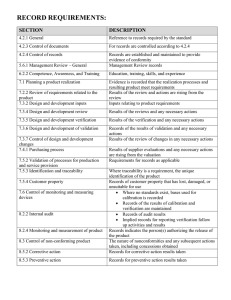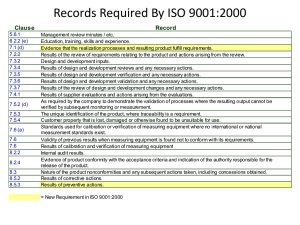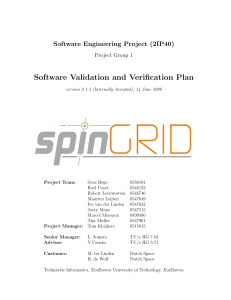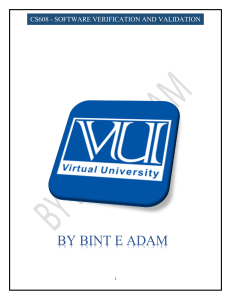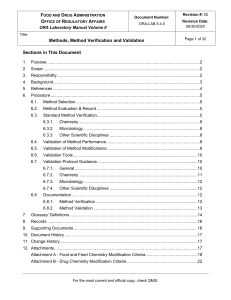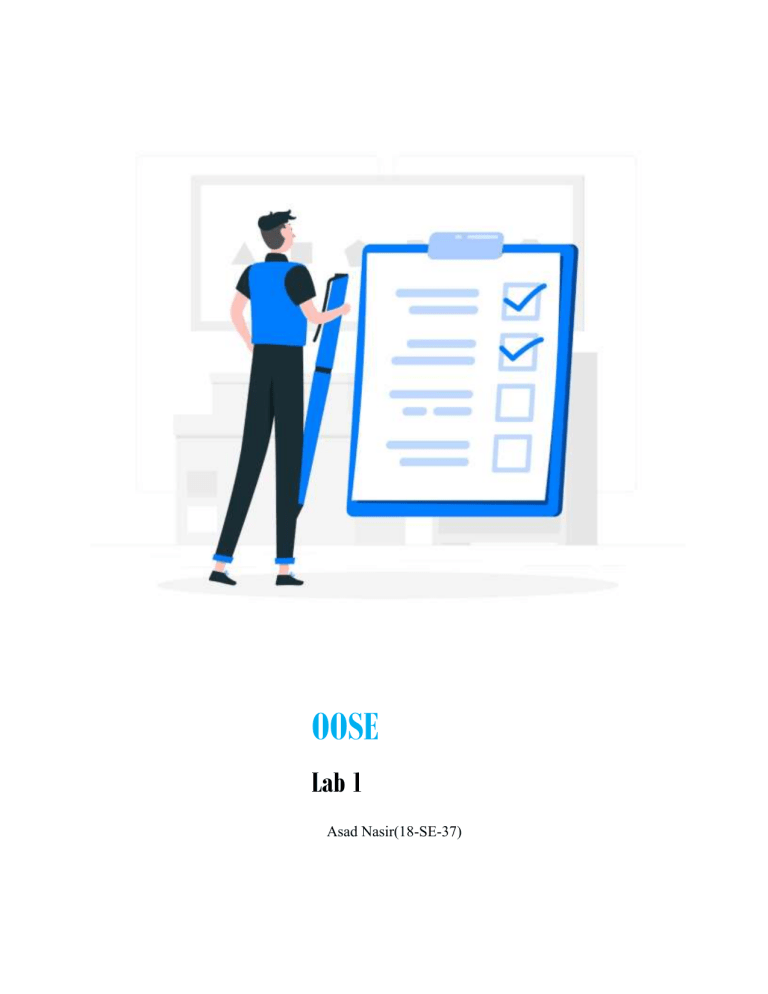
OOSE Lab 1 Asad Nasir(18-SE-37) Task 1 1. C 2. B 3. C 4. A 5. A 6. D 7. C 8. A 9. B 10. B Task 2 VERIFICATION VALIDATION It includes checking documents, design, codes and programs. Verification is the static testing. It does not include the execution of the code. Methods used in verification are reviews, walkthroughs, inspections and desk-checking. It includes testing and validating the actual product. Validation is the dynamic testing. It includes the execution of the code. Methods used in validation are Black Box Testing, White Box Testing and nonfunctional testing. It checks whether the software meets the requirements and expectations of a customer or not. It can only find the bugs that could not be found by the verification process. The goal of validation is an actual product. It checks whether the software conforms to specifications or not. It can find the bugs in the early stage of the development. The goal of verification is application and software architecture and specification. Quality assurance team does verification. It comes before validation. It consists of checking of documents/files and is performed by human. Validation is executed on software code with the help of testing team. It comes after verification. It consists of execution of program and is performed by computer. Task 3 1. Level One : Initial – Work is performed informally. A software development organization at this level is characterized by AD HOC activities (organization is not planned in advance.). 2. Level Two : Repeatable – Work is planned and tracked. This level of software development organization has a basic and consistent project management processes to TRACK COST, SCHEDULE, AND FUNCTIONALITY. The process is in place to repeat the earlier successes on projects with similar applications. 3. Level Three : Defined – Work is well defined. At this level the software process for both management and engineering activities are DEFINED AND DOCUMENTED. 4. Level Four : Managed – Work is quantitatively controlled. Software Quality management – Management can effectively control the software development effort using precise measurements. At this level, organization set a quantitative quality goal for both software process and software maintenance. Quantitative Process Management – At this maturity level, The performance of processes is controlled using statistical and other quantitative techniques, and is quantitatively predictable. 5. Level Five : Optimizing – Work is Based Upon Continuous Improvement. The key characteristic of this level is focusing on CONTINUOUSLY IMPROVING PROCESS performance. Key features are: Process change management Technology change management Defect prevention
